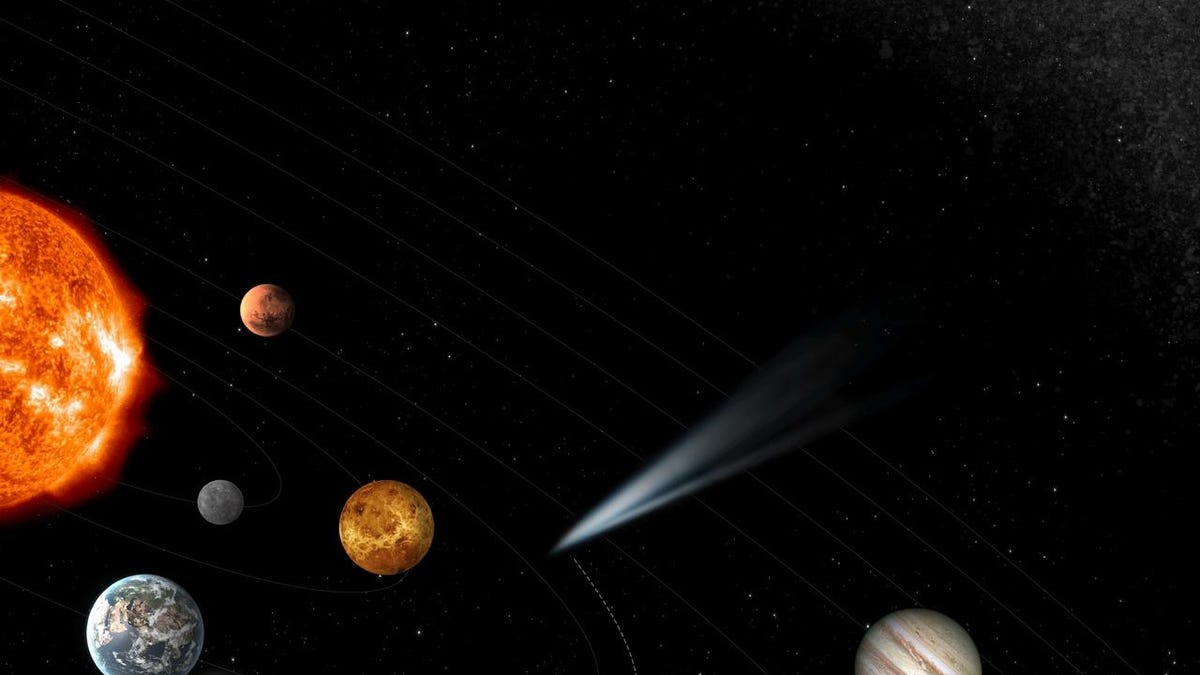Interstellar objects could be target for space mission
First there was Oumuamua. Now comet C/2019 Q4 may be visiting from beyond our solar system. A future interstellar tourist could be the first we check out up close with a mission already in the works.

An illustration of the Comet Interceptor concept
For only the second time ever, astronomers believe they've spotted an object that's something of a cosmic rogue. If such interstellar objects are as common as they appear to be, an upcoming space mission could be in a prime position to visit one in the not-too-distant future.
While practically everything else in our solar system is bound to the sun, newly discovered comet C/2019 Q4 (also nicknamed Borisov for the Ukrainian amateur astronomer who first noticed it) looks to be just passing through, much like the first known interstellar object, Oumuamua, discovered in 2017.
Oumuamua was already on its way out of the solar system at high speed when astronomers realized what it was. C/2019 Q4 will be flying ever closer to the sun until December, giving scientists vastly more opportunities to study it than were available with Oumuamua.
Here's an image of the possible interstellar comet, taken by G. Borisov, who discovered it. (HT @TM_Eubanks) pic.twitter.com/gK22iSfR43
— Corey S. Powell (@coreyspowell) September 11, 2019
If this new comet is confirmed to come from beyond our solar system, the second detection of an interstellar object in as many years would seem to make it more likely we're receiving visitors from beyond the sun's gravitational grasp more often than we previously knew. Fortunately, the European Space Agency is already developing a spacecraft designed with visiting just such an object in mind.
The Comet Interceptor mission was just approved in June and aims to launch around roughly 2028.
"The huge scientific achievements of Giotto and Rosetta -- our legacy missions to comets -- are unrivaled, but now it is time to build upon their successes and visit a pristine comet, or be ready for the next Oumuamua-like interstellar object," Günther Hasinger, ESA's director of science, said at the time.
The mission's Twitter account confirmed Thursday that it's watching the news of a possible second interstellar object with interest:
No need to hope; I'm not hypothetical!
— CometInterceptor (@CometIntercept) September 12, 2019
The basic plan for Comet Interceptor is that it'll be launched to LaGrange point 2, a point where the gravity of the Earth and sun essentially cancel each other out. The craft can then hang out there until a target, such as a future incoming interstellar object, is selected.
Unfortunately, by the time Comet Interceptor is ready to launch, C/2019 Q4 will be long gone (and hopefully it has a much better official name by then). But the way things are trending, it seems the odds are pretty good we'll be spotting interstellar travelers more often by 2028, including the first one that we get to check out up close.

